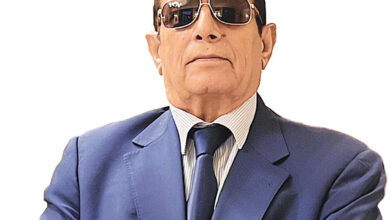Indian Navy’s Growing Indigenous Capabilities
 The Indian Navy celebrated the Navy Day on December 4, and a smiling naval Chief Admiral Robin Dhowan was beaming with pride apparently at the several milestones happening during his watch.
The Indian Navy celebrated the Navy Day on December 4, and a smiling naval Chief Admiral Robin Dhowan was beaming with pride apparently at the several milestones happening during his watch.
There were things which he said, and there were several others which he did not mention. For instance, India’s first nuclear powered nuclear attack submarine Arihant has cleared most of its trials, including the first firings of a dummy missile to see how well it pops out from different depths.
Then, there are indications of the Defence Ministry shortly according the formal go-ahead for the Navy’s second indigenous aircraft carrier – to be followed possibly by a third.
Again, the Navy had announced selection of Sikorsky S-70B multi-role helicopter on the Navy Day in 2014 but there was no progress as the company wanted revised costs due to the delay from the Indian side in progressing the proposal.
This has also been resolved and discussions for the badly-needed machines were described to be at an advanced stage by the Chief.
The Indian Navy has a very capable in-house Naval Design Bureau (NDB), and thanks to its efforts and vision of the naval leaders, past and present, ships are increasing being ‘Made in India’ with more and more of indigenous content. So there is a steady delivery of ships from the Indian shipyards, and compared to the Army and Air Force, the Navy is the fastest in building technology and adding capability to its arsenal.
In October, the Navy also acquired the last of the eight P-8I Neptune Long Range Maritime Reconnaissance (LRMR), giving it a new capability in line with its expanded role in maritime security. Defence Minister Manohar Parrikar released the Indian Maritime Security Strategy (IMSS 2015) also in October, mandating the Navy to go deeper south in the Indian Ocean and westwards up to the Mediterranean to ensure safe passage for Indian – and friendly – shipping. The submarine hunter P-8I is the most advanced system in the region, and can fly for several hours, giving the Navy reach in that perspective. That is why discussions for four more under the Options clause have also begun.
The Government is giving full support to the modernisation of the Navy, and Prime Minister Narendra Modi in fact addressed a Commanders’ conference mid-December on board INS Vikramaditya aircraft carrier. All the three Chiefs were there, and surely, another proud moment for the suave Admiral Dhowan for the privilege of being the host.
The Navy is already in sync with the Prime Minister’s Make in India initiative, and Admiral Dhowan emphasised that its vision is to develop and rely on indigenous capabilities. There is an effort now also to do periodic refits and upgrades in Indian shipyards, public sector or private.
The Nation is proud of the Navy, and we at India Strategic, wish the Chief and all naval personnel fair winds and following seas.
Gulshan Rai Luthra




